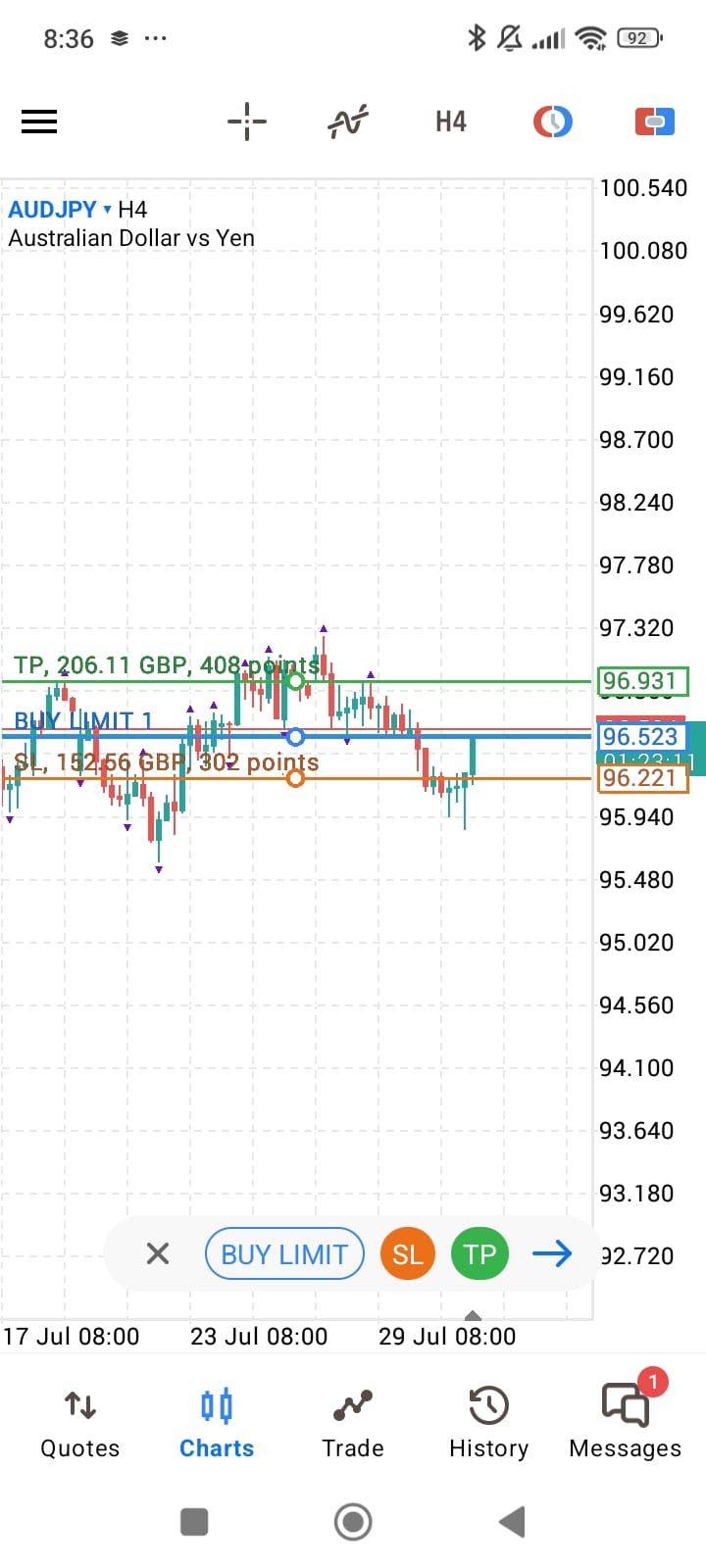*important: Finding the confidence to enter a trade.
A couple of people have mentioned one aspect of trading particularly difficult to grasp is 'entry and exit points' and finding the 'right time' to enter a trade.
Thank you for your thoughts, it's given me the idea to write this:
Exit and entry:
Profit target:
You can make a case to say the profit target is the most important, it goes without saying: You can't have a winning trade without it hitting the profit target. When it comes to setting my profit target, I much prefer it to be (long trade) below 'solid' 4hr resistance. It would have to be a 'big surprise' piece of news for me to have confidence the price will push past solid 4hr resistance. I don't concern myself too much with 1hr resistance or below.
Using an example of today's trade:

The reason I set the profit target at 40 pips (rather than 45) was because it was at the tip of the most recent 4hr swing.
I did actually suspect the price would break through the resistance, I just felt it might struggle at that point. But never in a million years would I have set a profit target above the next swing back.
Stop loss:
When it comes to having confidence in placing a trade, I put ever so slightly more emphasis on the stop loss.
Maybe there is momentum with a fresh cause, or maybe a move against your underlying bias has 'stalled' at 4hr support. Ultimately, you have to find a point whereby you can say "if that stops loss get hit, I'm happy for the market to have my money: I still think I should have taken the trade".
Ideally, you want your trade to be stopped out by a 'fresh event' rather than just 'random' movement.
Unfortunately, in the recent environment, finding that stop loss has become harder. I much, much, prefer placing a trade with a stop loss behind a 'nice 1hr swing', even better, 'a cluster' of 1hr swings. But you might have noticed 'the risk' to some of my recent trades has been the lack of 'solid' support.
What is 'solid support' (a nice swing)? When I say 'a nice swing', I'm referring to the only 'chart pattern' I give any credence to. A U shape, meaning (going long) a swing has formed and immediately 'pushed up', creating the letter U. This gives me confidence that the next time price 'tests' the area, support is 'likely' to hold.
Hence the reason I wouldn't have placed a profit target above the very strong (reverse) U shape on the above chart.
In the absence of 'a nice swing' to place a stop loss behind. I'm content using ATR, specifically somewhere between the 1hr and 4hr (lookback 100). But placing a trade without a swing to hide a stop loss behind is bold. Particularly if you're a new trader, there is no harm in identifying an opportunity and waiting for a swing. If the price continues to your profit target before a swing has formed, don't worry about it. Take solace in the fact you had a good idea. There will be plenty of other opportunities soon enough.
Ultimately, it comes down to making a deciding in the moment, bearing in mind your next available time to trade. If you're confident in a move, there is no swing but you can't trade again for 10 hours. Go with the ATR. Although, over the years I have softened on my stance of using mobile devices to trade. These days, I place most of my trades on my phone. It does open up more opportunities to trade.
Finally. There are no hard rules on 'swing timeframe'. As mentioned, I much prefer at least a 1hr swing. But sometimes you might feel confident with a 30min swing to place a stop loss behind. Maybe even a cluster of 15min swings.
For 'fresh red flag catalyst trades' you might feel confident with a 15min or even 5min swing.
Just be aware that the lower the timeframe, the less likely the swing is to hold.
I hope this helps, please feel free to offer thoughts or questions, as I say, it gives me ideas for things to write about: johnelfedforexblog@gmail.com
